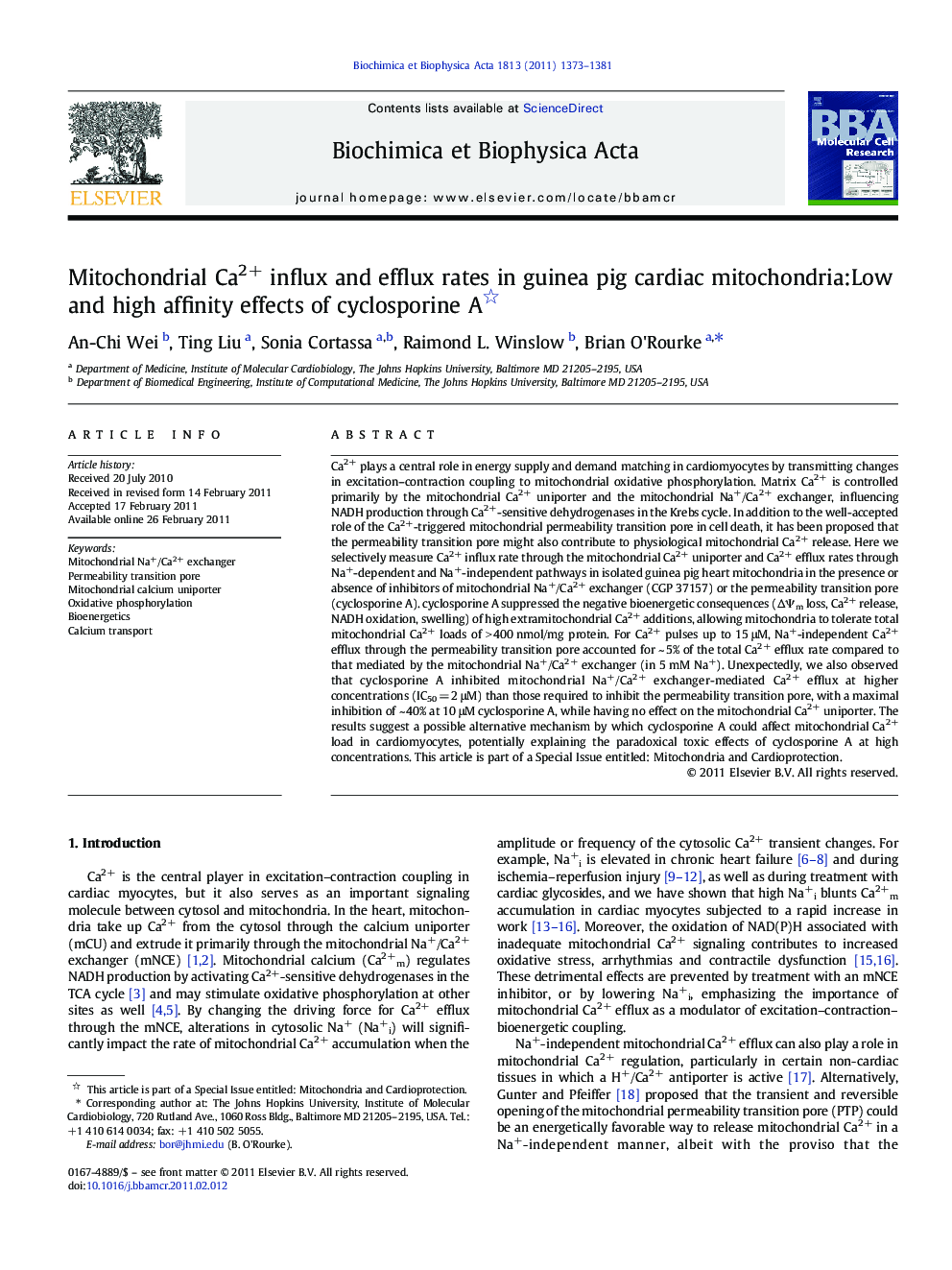| Article ID | Journal | Published Year | Pages | File Type |
|---|---|---|---|---|
| 1950836 | Biochimica et Biophysica Acta (BBA) - Molecular Cell Research | 2011 | 9 Pages |
Ca2+ plays a central role in energy supply and demand matching in cardiomyocytes by transmitting changes in excitation–contraction coupling to mitochondrial oxidative phosphorylation. Matrix Ca2+ is controlled primarily by the mitochondrial Ca2+ uniporter and the mitochondrial Na+/Ca2+ exchanger, influencing NADH production through Ca2+-sensitive dehydrogenases in the Krebs cycle. In addition to the well-accepted role of the Ca2+-triggered mitochondrial permeability transition pore in cell death, it has been proposed that the permeability transition pore might also contribute to physiological mitochondrial Ca2+ release. Here we selectively measure Ca2+ influx rate through the mitochondrial Ca2+ uniporter and Ca2+ efflux rates through Na+-dependent and Na+-independent pathways in isolated guinea pig heart mitochondria in the presence or absence of inhibitors of mitochondrial Na+/Ca2+ exchanger (CGP 37157) or the permeability transition pore (cyclosporine A). cyclosporine A suppressed the negative bioenergetic consequences (ΔΨm loss, Ca2+ release, NADH oxidation, swelling) of high extramitochondrial Ca2+ additions, allowing mitochondria to tolerate total mitochondrial Ca2+ loads of > 400 nmol/mg protein. For Ca2+ pulses up to 15 μM, Na+-independent Ca2+ efflux through the permeability transition pore accounted for ~ 5% of the total Ca2+ efflux rate compared to that mediated by the mitochondrial Na+/Ca2+ exchanger (in 5 mM Na+). Unexpectedly, we also observed that cyclosporine A inhibited mitochondrial Na+/Ca2+ exchanger-mediated Ca2+ efflux at higher concentrations (IC50 = 2 μM) than those required to inhibit the permeability transition pore, with a maximal inhibition of ~ 40% at 10 μM cyclosporine A, while having no effect on the mitochondrial Ca2+ uniporter. The results suggest a possible alternative mechanism by which cyclosporine A could affect mitochondrial Ca2+ load in cardiomyocytes, potentially explaining the paradoxical toxic effects of cyclosporine A at high concentrations. This article is part of a Special Issue entitled: Mitochondria and Cardioprotection.
Research highlights► Cyclosporine A (CsA) suppresses the Ca2+-dependent activation of the mitochondrial permeability transition pore (PTP) and protects cells from mitochondrial membrane potential (ΔΨm) loss leading to necrotic or apoptotic cell death. ► Transient PTP opening has been hypothesized to be a physiological mechanism for mitochondrial Ca2+ release and CsA has been reported to increase mitochondrial Ca2+ load. ► The present findings specifically measure Ca2+ influx and efflux rates in isolated guinea pig cardiac mitochondria and show that PTP-mediated Ca2+ efflux is small relative to that mediated by mitochondrial Na+/Ca2+ exchange. ► Concentrations of CsA higher than those required to inhibit the PTP are shown to partially inhibit mitochondrial Na+/Ca2+ exchange. ► The low affinity effect of CsA on mitochondrial Ca2+ efflux may explain, in part, the paradoxical toxic effects of CsA on cardiac myocytes.
